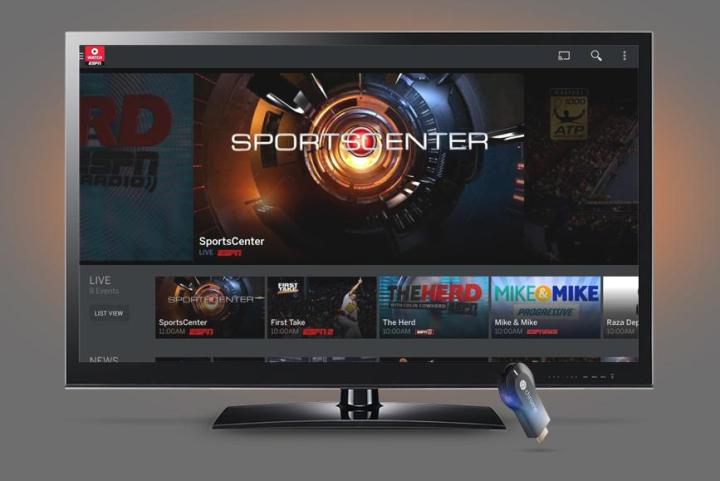
Chromecast seemed all the rage when it premiered last July. Despite offering only a few apps at launch, the affordable streaming dongle flew off shelves, and since Google opened its developer kit to the world, it has amassed an impressive number of supported apps and services. However, the competition has only heated up, and according to a new survey by Parks and Associates, Chromecast usage has begun to plummet under the pressure.
In its survey of 10,000 U.S. households, Parks found that the number of U.S. homes with streaming devices has risen from 14 percent in 2012, to over 20 percent by the end of the first quarter of 2014. And while the Chromecast has held steady at 6 percent of broadband connected households, users are turning to other connected devices in droves.
The percentage of homes who used their Chromecast at least once a month for web browsing went from 76 percent in the third quarter of 2013, to 57 percent in the first quarter of 2014. The decline for video streaming was much less striking, moving from 78 percent to 73 percent in the same period. But perhaps most telling, only 22 percent of Chromecast adopters say it is the most commonly used streaming device in the home.
One of the Chromecast’s most appealing features has always been its bargain-basement price tag of $35. However, there are a lot of ways to get connected these days. People can potentially buy a competent streaming device by accident, such as an entry-level Blu-ray player. And those devices, along with gaming consoles, smart TVs, and media streamers like the Apple TV all have something the Chromecast doesn’t: an on-screen interface.
Chromecast’s unique talent of ‘casting’ content from apps on your mobile device or PC – without taking up those devices internal resources – make it both a novelty, and a convenience for those who want to easily transition from the second screen to the big screen. But the problem is, as the novelty has worn off, many have found that it can be a whole lot easier to navigate to content via a well organized interface on one of the many connected devices that are quietly piling up in their entertainment centers.
Take Roku’s devices, for instance: The talented little media streamers provide a well-loved, intuitive home screen, and an easy way to search for content across platforms – something that Chromecast’s pick-and-play design simply can’t match. And with a Roku Streaming Stick, users can have the best of both worlds, launching Roku’s unmatched arsenal of apps from a supremely portable device that looks extremely similar to the Chromecast dongle. Well played.
Amazon’s Fire TV interface is similarly well organized, even allowing users the ability to conduct voice activated searches from a microphone built right into the remote. (Maybe you’ve seen the tongue-in-cheek commercials featuring Gary Busey searching for Gary Busey?) And the list goes on. Each new Blu-ray player or gaming console that launches offers an updated, more enticing interface, with internal and external resources Chromecast’s dongle can’t keep up with.
To be sure, Chromecast is far from out of the game. The device is adding more apps all the time, and provides novel ways to utilize its talents that go beyond what a typical streaming device can do. And lets face it, with the full weight of Google behind it, it has plenty of runway left, no matter what happens.
But as the numbers show, the streaming game is not one that stands still for long. Google will have to keep innovating to keep Chromecast viable, or it risks watching the backbone of its online media distribution get left in the dust.


